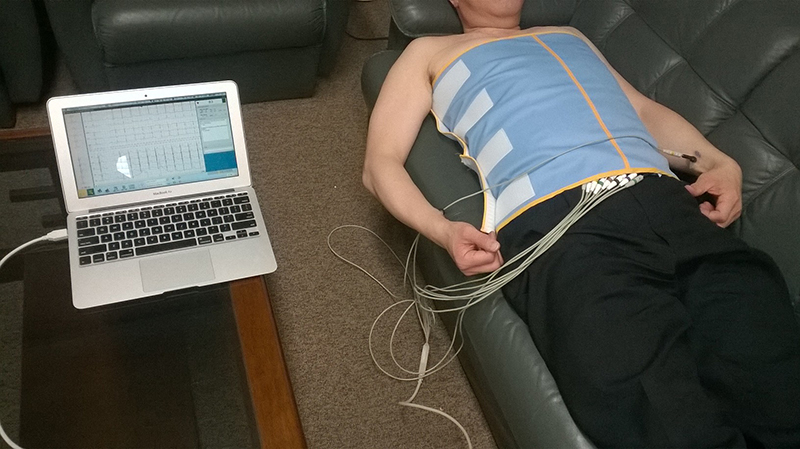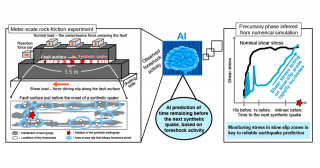In a collaborative project with two corporations -- Teiken Limited of the Teijin Group and Advanced Scientific Technology & Management Research Institute of Kyoto (ASTEM) -- a research team led by Professor Tomohiro Kuroda, Director of Medical Information Technology and Administration Planning at the Kyoto University Hospital, successfully applied the Nishijin-brocade weaving technique to develop an e-textile for obtaining 12-lead electrocardiograms (ECGs). The project was funded by Japan's Ministry of Economy, Trade, and Industry under the FY2014 medical-industrial partnership promotion program. The ECG-sensing textile was on display at the Kyoto International Conference Center during the lectures and exhibition of the General Assembly of the Japan Medical Congress 2015 Kansai, which ran from 11 through 13 April.
From the researcher
Information technology (IT) can bring clinical medicine into the home. Fundamental to this vision are wearable and ubiquitous sensors, and textiles with electronic functionality -- commonly known as e-textiles or smart textiles -- are basic examples of such devices and an important focus of clinical R&D. Our research seeks to establish a platform for prototyping and mass producing such devices, the ECG-sensing textile being the first product to result from this effort. Using Nishijin-brocade weaving, which we have identified as an ideal technique for producing e-textiles, we aim to help turn Kyoto, the home of Nishijin, into an IT development and production center.
Research summary
Cardiovascular disease is the second leading cause of death in Japan. Some forms, including myocardial infarction and other types of acute ischemic heart disease (IHD), must be treated with a procedure called percutaneous coronary intervention (PCI) within two hours of onset in order to save the patient's life. This requires promptly evaluating the sufferer's condition to determine whether it is acute IHD, which is treatable with PCI, so that the patient can be taken to the right hospital for receiving the procedure. This evaluation requires a 12-lead ECG, which involves placing 10 electrodes at correct locations on the patient's body, a highly complex task that is often impossible to perform in the pre-hospital setting.
The ECG textile developed by Prof Kuroda's team is embedded with eight of the ten electrodes required for 12-lead electrocardiography; paramedics would simply need to wrap it around the patient's chest, and the electrodes would automatically be placed at correct locations.
Produced using Japan's traditional weaving technique called Nishijin-ori -- which uses multiple single-colored threads for the woof to create elaborate patterns -- this textile comprises a complex electric circuit made with a single conductive yarn, making it a high-quality device that can be manufactured easily and at low cost. The commercial version of the product is being developed by the Teijin Group and is scheduled to go on sale within 2015.






